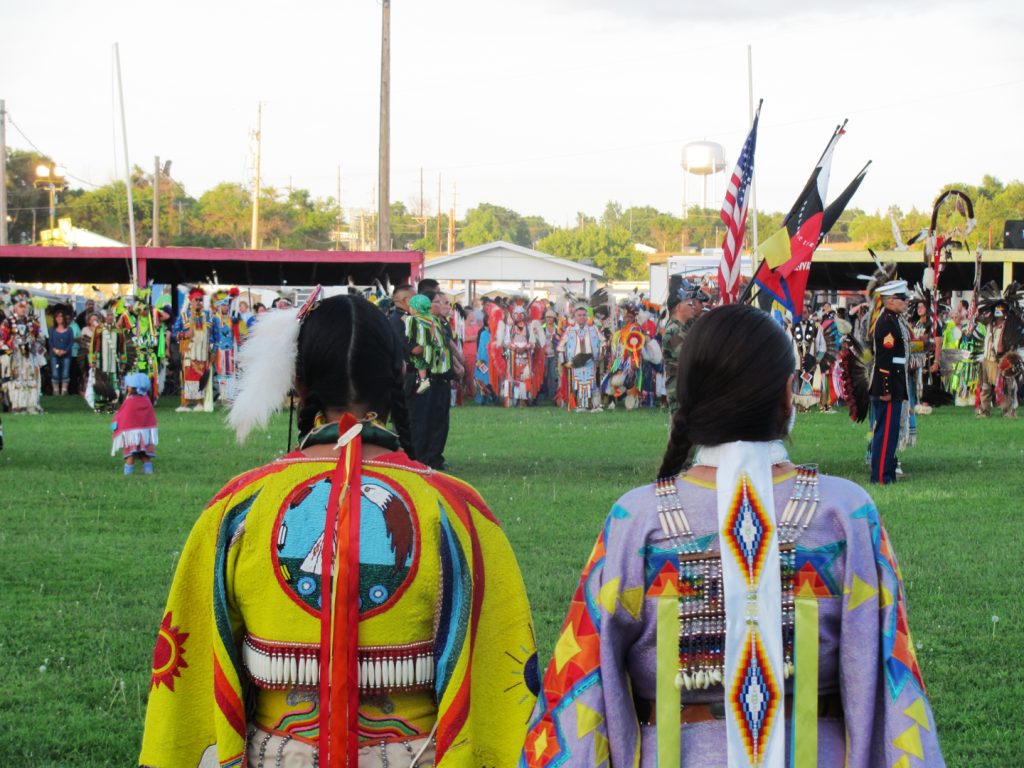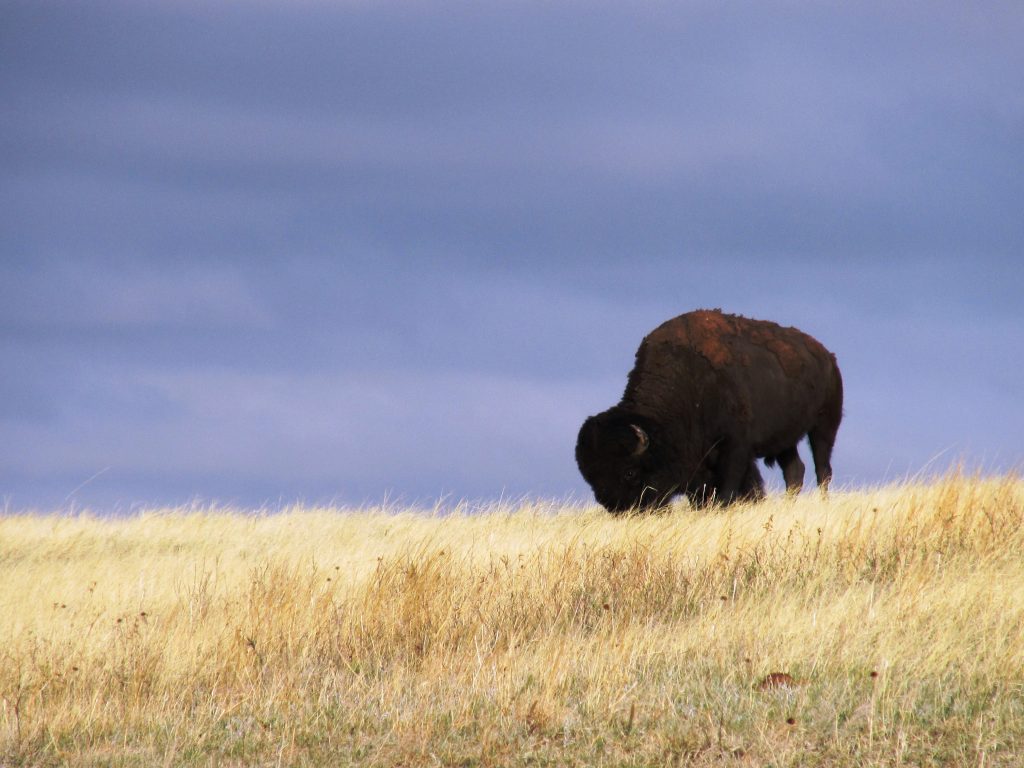The following is the introduction to my third book, 48WHISPERS From Pine Ridge and the Northern Plains. Please enjoy.
As a teenager our family took a vacation to the Grand Tetons. I was so enamored with the majestic grandeur of the West that I subsequently returned one college summer to work in Yellowstone National Park. I happily took a job as a housekeeper cleaning hotel rooms in exchange for the opportunity to hike the Yellowstone backcountry. During our days off we would hitchhike to trailheads and disappear into the wilderness. Whenever I came across a bison herd I was mesmerized. As a nineteen-year-old, I could sit and watch buffalo all day. I was in love with the American West.
But then I grew up and life began to call. In 1998 I became president of Hancock Lumber, one of the oldest companies in America (1848). In 2008 the national housing and mortgage markets collapsed, spiraling our industry and company into turmoil. In 2010, at the peak of the economic crisis, I began to have trouble speaking. Suddenly all the muscles in my throat would spasm, squeeze, and contract when I talked. The simple act of verbal communication had unexpectedly become a complex chore. I was later diagnosed with spasmodic dysphonia (SD), a rare neurological voice disorder with no known cause or cure. Trying to help lead our company through that crisis without the consistent or comfortable use of my voice took a toll, but at the time rest was not an option, so I fought through. I pushed and strained, despite my condition, all the way past 2012, when I could see that our company was going to be safe.
When it was over I intuitively recognized that I needed some time to focus on myself, regain my balance, and “search for my voice.” How that restorative process unfolded, however, would exceed my wildest imagination. The West once again came calling.
In August of 2012 I picked up a copy of National Geographic magazine. On the cover there was a picture of a Lakota teenager riding a mustang across a treeless ridge. Below, the caption read:
In the Spirit of Crazy Horse REBIRTH OF A SIOUX NATION.
Intrigued, I opened the magazine to page thirty and proceeded to devour the text:
“After 150 years of broken promises, the Oglala Lakota people of the Pine Ridge Reservation in South Dakota are nurturing their tribal customs, language, and beliefs. A rare, intimate portrait shows their resilience in the face of hardship.”
Instantly I was fully immersed. I felt I knew this story somehow, and that I had been, or was destined to become, involved. “I’m going to go there,” I said to my wife, Alison, as soon as I had finished. “I want to see what life is like for the people who live there.”
Three months later I was back in the American West, this time in the center of the northern plains. I disembarked from a small jet in Rapid City on a bright Sunday afternoon in late October, where Emma “Pinky” Clifford met me at baggage claim. “Welcome,” she said simply, as if she had been expecting me all her life. Pinky was the executive director of the Oglala Sioux Tribe Partnership for Housing. I had contacted her during my initial search for a friend who might host my visit to Pine Ridge. After lunch we drove through the reservation for the first time. I was in awe of what I saw, simultaneously enthralled and confused.
That first trip triggered a host of deep emotions. I was captivated by the people of Pine Ridge. Their collective resilience despite historic tragedy and economic incapacitation was nothing short of inspiring. Additionally, I was transfixed by the northern plains. The enormity of nature was on full display here. The expansive grasslands, the rolling hills, the dusty outcroppings, and the proximity of sky to earth—all combined to sweep me away. One trip became two. Two trips became three. In a span of eight years I would travel back to Pine Ridge and the surrounding plains more than twenty times. Here, usually alone, I could rest. Here I could breathe. Here I could turn inward. Here my voice improved. Here I felt as if I was truly present with all the world.
In the years that followed I would explore the entire reservation as well as the larger ancestral home- lands of the Lakota people. From the North Platte River to the Yellowstone and from the Black Hills to the Bighorn Mountains, I would eventually cover nearly every road, abandoned fort, forgotten battle- ground, and historic trail in the region. What I loved most was the experience of being nomadic.
I traveled light, carrying little more than a cell phone, a camera, a journal, and a wool sweater. Sometimes I knew where I was staying for the evening and sometimes I didn’t. As the CEO of a corporation I was accustomed to schedules, routines, and deadlines, so this timeless and task less odyssey felt liberating and otherworldly. At home I was well-known. Here, no one knew me. I traveled in complete freedom and anonymity. When something interested me, I stopped. When I was hungry, I ate. When tired, I slept.
Along the way I took picture after picture after picture, eventually collecting thousands of images. But what I did more than anything else was reflect. Ideas both cerebral and spiritual flooded my imagination. Here I could contemplate the past and the future with newfound clarity.

During my travels I became particularly interested in Black Elk, the most famous Lakota holy man of the twentieth century. In fact, I would visit the decaying cabin he once called home many times, and I even hiked one day to the summit of Black Elk Peak to perform a modest ceremony in his honor. Black Elk’s understanding—that sacredness dwells within us all—resonated deeply with me: “The Wasichu wanted Crazy Horse to go to Washington with Red Cloud and Spotted Tail and others to see the Great Father [the president] there; but he would not go. He told them he did not need to go looking for his Great Father. He said: ‘My father is with me, and there is no Great Father between me and the Great Spirit.’ ”—Black Elk
The more I read about Black Elk, Lakota spirituality, and Lakota values, the more intrigued I became. There was a certain wisdom here that could only be obtained through generation upon generation of living and dying in intimacy with nature. This was knowledge from the soul of the universe personified and preserved by the Sioux, who then endured over a century of systematic oppression and genocide designed to erase then remake their presence on the plains. But through great hardship their knowledge, language, and culture endured.
As a visitor and a guest it was clear to me that the perseverance this required had a purpose. Their sacrifices were not in vain. The reservation communities of the northern plains had carried with them a wisdom from the past that was needed for the future.
This book aspires to honor that wisdom while paying respect to all the inhabitants of the northern plains, past and present, two-legged and four-. This book celebrates both the Indians and the ranchers, the nomads and the settlers, the residents and the passersby. For the storied history of this region is a microcosm of the entire human experience. Everything that exists is related and interconnected. There is a magical symmetry within the chaos of the universe, and this book walks that path.
Black Elk was escorted on his sacred vision by the 48 horses of the four directions. In honor of his journey, this book contains 48 thoughts (or whispers) for the future of humanity, each of which is 248 words in length. I use the term whispers because that is how each idea was received. It was as if the windswept grass spoke softly and shared a secret each time I stopped, sat still, and listened. As it turns out, these whispers are everywhere, but we are often too busy or consumed to hear them. Black Elk was escorted on his sacred vision by the 48 horses of the four directions. In honor of his journey, this book contains 48 thoughts (or whispers) for the future of humanity, each of which is 248 words in length. I use the term whispers because that is how each idea was received. It was as if the windswept grass spoke softly and shared a secret each time I stopped, sat still, and listened. As it turns out, these whispers are everywhere, but we are often too busy or consumed to hear them.
This is the third and final book in a trilogy that celebrates a decade-long odyssey that changed my life. That change was sparked by the people of the Pine Ridge Indian Reservation and then cultivated and refined by the magical aura of nature’s hand on the northern plains. From here I’m moving on, deeper into the unknown, like nature always does, and as the people of Pine Ridge must now do. Mitakuye oyasin. Please enjoy.
—Kevin Hancock
